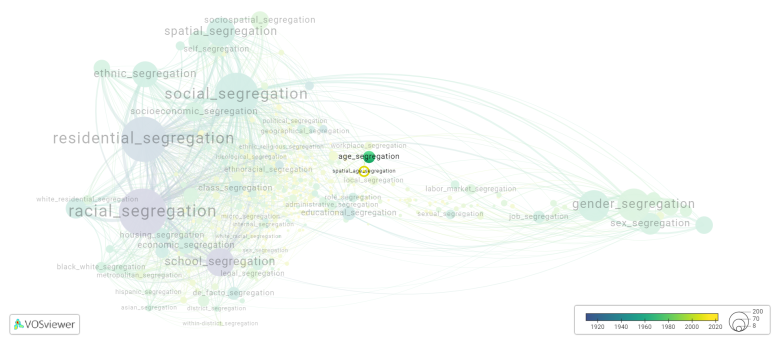Spatial age segregation
Date and country of first publication[1]
2018
United States
Definition
Spatial age segregation refers to the physical separation of people of different age groups within a particular space or community. This can occur in various places, such as neighborhoods, schools, and recreational facilities, where older and younger individuals are often separated based on age. Age segregation can have both positive and negative effects, impacting social interactions, community cohesion, and access to resources for different age groups.
See also
Related segregation forms
Spatial age segregation is frequently discussed in the literature with the following segregation forms:
age segregation, social segregation

This visualization is based on the study The Multidisciplinary Landscape of Segregation Research.
For the complete network of interrelated segregation forms, please refer to:
References
Notes
- ↑ Date and country of first publication as informed by the Scopus database (December 2023).
Spatial age segregation appears in the following literature
Deng G., Mao L. (2018). Spatially explicit age segregation index and self rated health of older adults in US cities. ISPRS International Journal of Geo-Information, 7(9), -. MDPI AG.https://doi.org/10.3390/ijgi7090351
Milias V., Psyllidis A. (2022). Measuring spatial age segregation through the lens of co accessibility to urban activities. Computers, Environment and Urban Systems, 95(), -. Elsevier Ltd.https://doi.org/10.1016/j.compenvurbsys.2022.101829
